
December 2011
Welcome to the Year in Review Issue of Net Results EXPRESS
Net Results EXPRESS (NRx) is an award-winning, monthly e-newsletter highlighting medical and scientific breakthroughs, major grants and honours awarded, and other research-related events at UHN. In this special issue, you can read about selected research accomplishments and milestones of the past year of our five research institutes, the Ontario Cancer Institute (OCI), the Toronto General Research Institute (TGRI), the Toronto Western Research Institute (TWRI), the Toronto Rehabilitation Institute (TRI) and the Techna Institute for the Advancement of Technology for Health (Techna). We hope you will find this newsletter informative and helpful and we wish you a festive holiday season. If you have feedback or questions, please contact www@uhnresearch.ca. Christopher J. Paige, PhD, FCAHS  |
January
Leukemia: Uncovering Genetic Diversity in Propagating Cells
Parkinson's Disease: New Insights into the Role of the Cerebellum in Disease Development New findings from Drs. Robert Chen and Anthony Lang at TWRI have shed new light on our understanding of the role of the cerebellothalamocortical (CTC) pathway in Parkinson's disease (PD). The group assessed whether stimulation of the cerebellum or primary motor cortex is involved in the generation or transmission of tremors in PD. Their findings show that resting and postural tremors in PD are mediated by different neuronal pathways, and that the CTC pathway is involved in the generation or transmission of postural tremor. [Abstract] |
February
Depression: Deep Brain Stimulation Shows Benefit in 3 and 6 Year Follow-Up Study
Regenerative Medicine: Development of Heart Cells from Stem Cells A study from OCI’s Dr. Gordon Keller demonstrated the delicate balance of factors involved in producing heart cells from different types of embryonic and induced pluripotent stem cells. The study described the manipulation of key signalling pathways in pluripotent cells, which induced the differentiation of heart cell progenitors. These findings provide immense opportunities to develop novel therapies for cardiovascular disease, and to study the development of normal and diseased heart tissue. [Abstract] |
March
Cancer: Novel Organic Nanoparticles for Cancer Targeting and Treatment
|
April
Respiratory Disease: Long-Term Study on the Effects of Acute Illness A detailed study from TGRI investigators Drs. Margaret Herridge and Angela Cheung examined the long-term effects of Acute Respiratory Distress Syndrome (ARDS). The group conducted a five year study on the physical function and quality of life of patients with ARDS who were discharged from intensive care units. In general, these patients had a decreased ability to exercise, a reduction in overall quality of life and suffered from a number of psychological disorders, including depression and anxiety. [Abstract] Lung Transplantation: High-Risk Donor Lungs Can Now Be Safely Used for Transplant A TGRI team, led by Dr. Shaf Keshavjee, has shown in a clinical trial that the Toronto XVIVO Lung Perfusion System can safely and effectively treat, re-assess and improve the function of high-risk donor lungs so that they can be successfully transplanted into patients. This technique, developed by Dr. Keshavjee and his team at UHN, could significantly expand the donor organ pool and improve outcomes after transplantation. [Abstract] Neurology: Surgical Procedure Reverses Loss of Brain Matter Researchers at TWRI, led by Dr. Michael Tymianski, demonstrated the restoration of lost brain tissue through cranial bypass surgery. This surgical procedure restored blood flow to areas of the brain that undergo a progressive loss of tissue in cerebrovascular disease. Loss of brain tissue is associated with a higher risk of stroke, and the development of neurodegenerative disorders. These findings show, for the first time, the reversing of damaging effects of decreased blood flow to the brain. [Abstract] |
May
Leukemia: Helping the Immune System Fight Cancer
Parkinson’s Disease: Enhancing the Therapeutic Benefits of L-DOPA A study from TWRI’s Dr. Jonathan Brotchie, examined how different forms, R- or S-form, of MDMA (3,4-methylenedioxymethamphetamine) function to enhance the positive therapeutic effects of L-DOPA, the most common treatment for Parkinson's disease (PD). Addition of R-MDMA to L-DOPA treatment decreased the severity of dyskinesia, a motor complication associated with L-DOPA therapy, without altering the duration of antiparkinsonian effects. Addition of S-MDMA to LOPDA increased the duration of antiparkinsonian benefits although it exacerbated the following dyskinesia. [Abstract] |
June
Neurology: Stimulation of the Motor Cortex Improves Hand Tremors
|
July
Gastroenterology: New Insights into Blood Glucose Regulation A study from TGRI’s Dr. Tony Lam examined the role of protein kinase C (PKC), a multi-functional enzyme located in the lining of the gut, in nutrient sensing—the ability of cells to recognize and respond to energy substrates, like glucose. The study found that PKC triggers the role of the gut in sensing available nutrients and maintains blood glucose levels. Activation of this system in the gut could potentially help to balance blood glucose levels in diabetes and obesity. [Abstract] |
August
Autoimmune Diseases: Explaining the Role of PTPN22 in Immunity TGRI’s Dr. Katherine Siminovitch identified a mechanism by which a mutation in the PTPN22 gene causes abnormal immune responses that lead to the development of autoimmune disease. This mutation caused a decrease in the PTPN22 gene’s protein product, Lyp, and led to an abnormal increase in the activation of three key immune cell populations: T-, B- and dendritic cells, a key feature of autoimmune disease. [Abstract] Immunity: Identifying the Mechanisms Involved in Inflammation of the Colon
|
September
Pulmonary Disease: Increasing Physical Activity
Cancer: Creating a Blueprint of Protein Modifications
|
October
Clinical Trials: The Impact of Announcements on Company Stock Prices
|
November
Prostate Cancer: Combination Treatment Greatly Improves Survival A study from OCI’s Dr. Padraig Warde proposed a more effective method of treating advanced prostate cancer with a combination of radiation and hormone therapy. Combination therapy was found to improve survival by 23 percent and disease-specific survival by 43 percent, compared with hormone therapy alone. This landmark study proposes that the addition of radiation to the treatment plan should become part of the standard therapy. [Abstract] Cardiology: Sodium Intake Increases the Risk of Sleep Apnea
|
 |
Toronto Rehabilitation Institute Joins UHN
|
UHN and University of Toronto Launch Techna Institute
On November 9th, UHN, in collaboration with the University of Toronto, officially launched the Techna Institute for the Advancement of Technology for Health. Techna is a new research institute designed to shorten the time interval from technological discovery to clinical application, while also stimulating the innovation cycle through clinically driven advancements and translational research. Techna is funded in part through The Princess Margaret Hospital Foundation and a generous donation from Carlo Fidani. To find out more about Techna, please visit the institute webpage. |
UHN Named Canada's Top Research Hospital
UHN was named as the top ranked research hospital in all of Canada. The study, conducted by Research Infosource, Canada’s leading provider of research intelligence for business and higher education, examined a total of 40 research hospitals across Canada and ranked them according to research income (all funds used to support research in the form of a grant, contribution or contract from all sources internal and external to the institution). UHN topped this list with $267,654,000 in research income for the fiscal year 2010. Collectively, the 40 Canadian research hospitals raised $2.1 billion to fund a wide variety of research programs. |
New TGRI Director Dr. Mansoor Husain
|
Health Services Research at UHN
Health services research (HSR) is a multidisciplinary field of inquiry, both basic and applied, that examines the use, costs, quality, accessibility, delivery, organization, financing and outcomes of health care services to increase understanding of the structure, processes and effects of health services for individuals and populations. This past year, HSR was officially recognized as a research platform, joining other systematically organized areas of research. This will strengthen the vital role HSR plays in ensuring that health care remains at the forefront of innovation and continually improves, along with the health and well-being of patients. |
PMH Awarded Third National Cancer Institute Contract
|
OCI/PMH Selected as Member Site in Cancer Immunotherapy Trials
OCI/PMH, led by Dr. Pamela Ohashi, was selected as one of 27 institutions to participate in the Cancer Immunotherapy Trials Network, funded by the National Cancer Institute, to conduct phase I and II clinical trials in the area of cancer immunotherapy. Cancer immunotherapy focuses on improving the ability of the patients’ own immune systems to fight cancer. OCI/PMH is the only institution outside of the United States selected to participate in this initiative. |
TWRI Researcher Awarded Funding
The Ontario Ministry of Research and Innovation awarded TWRI’s Dr. Michael Tymianski $1.4M in new funding. Financial support for the project "TRPM7 Inhibitors for the Treatment of Stroke and Myocardial Ischemia" will be used for the development of drugs targeting TRPM7, a protein implicated in cell damage, in the treatment of cellular damage arising from stroke, heart attack and retinal disorders. |
New CIHR Funding for Nanomedicine Research
Dr. Gang Zheng and colleagues were awarded new funding from the Canadian Institutes of Health Research’s Emerging Team Grant: Regenerative Medicine and Nanomedicine program to advance nanomedicine research. The team will receive $2.32M over five years to support the operation of the project. The research project, entitled “Nanotechnology-enabled image-guided interventions in vascular and lung diseases”, will translate innovations in nanotechnology into commercially viable, clinical trial-ready products by focusing on the development of nanotechnology-enabled image-guided treatments for lung cancer and vascular diseases. |
UHN Medical Imaging Tool Licensed to Vexim SA
The software and algorithm, developed by Paul Dufort in UHN’s medical imaging group, allows for the recognition and segmentation of highly deformed objects from medical scans taken in a range of contexts. The software will continue to be improved and extended, with the next phase of work aimed at incorporating MRI scans to address growing concerns about radiation exposure from CT. |

 On January 20, 2011, Dr. Ernest "Bun" McCulloch passed away. Dr. McCulloch was an esteemed Senior Scientist and former Head of Biology at the Ontario Cancer Institute/Princess Margaret Hospital and a University Professor Emeritus at the University of Toronto. This pioneer of stem cell science, along with Dr. James Till, is renowned for establishing an entire field of study with the 1961 discovery of blood-forming stem cells.
On January 20, 2011, Dr. Ernest "Bun" McCulloch passed away. Dr. McCulloch was an esteemed Senior Scientist and former Head of Biology at the Ontario Cancer Institute/Princess Margaret Hospital and a University Professor Emeritus at the University of Toronto. This pioneer of stem cell science, along with Dr. James Till, is renowned for establishing an entire field of study with the 1961 discovery of blood-forming stem cells.Click here for a more detailed biographical sketch of Dr. McCulloch.

 Dr. Anthony Lang was recognized several times in 2011 for his contributions to the field of movement disorders, notably for advancements in therapeutics for patients with Parkinson's disease. In February, he was appointed to the Order of Canada, our country’s highest civilian honour. The Order was established to recognize a lifetime of outstanding achievement, dedication to community and service to the nation.
Dr. Anthony Lang was recognized several times in 2011 for his contributions to the field of movement disorders, notably for advancements in therapeutics for patients with Parkinson's disease. In February, he was appointed to the Order of Canada, our country’s highest civilian honour. The Order was established to recognize a lifetime of outstanding achievement, dedication to community and service to the nation.In September, Dr. Lang was named a Fellow of the Royal Society of Canada (RSC), in recognition of his leading role in Parkinson’s disease research. RSC is a Canadian institution devoted to recognizing excellence in learning and research as well as accomplishments in the arts, humanities and sciences.
Also in September, Dr. Lang was elected as a Fellow of the Canadian Academy of Heath Sciences (CAHS) on the basis of his leadership, creativity and commitment to the advancement of the academic health sciences.
Congratulations Dr. Lang!
UHN congratulates all of the OCI researchers who were recognized over the past year. Some of the scientists honoured this year include:
 Dr. Richard (Dick) Hill received the 2011 Henry S. Kaplan Distinguished Scientist Award from the International Association for Radiation Research in recognition of his scientific achievements in basic and practical radiological sciences.
Dr. Richard (Dick) Hill received the 2011 Henry S. Kaplan Distinguished Scientist Award from the International Association for Radiation Research in recognition of his scientific achievements in basic and practical radiological sciences.
Dr. Bradly Wouters was awarded the Klaas Breur Gold Medal Award from the European Society for Therapeutic Radiology and Oncology (ESTRO). The Klaas Breur Award, the most prestigious prize awarded by ESTRO, acknowledged Dr. Wouters’ major scientific contributions to the field of radiotherapy.
Dr. Robert Bristow was awarded Honorary Membership into ESTRO for his developments in basic research for the field of radiotherapy.
 Dr. Michael Jewett received the American Urological Association (AUA) Distinguished Contribution Award 2011 for his outstanding contributions to science and the treatment of urological malignancies at the 2011 Annual Scientific Meeting of the AUA. He also received the Society of Urologic Oncology Medal for his achievements and contributions in the field of urologic oncology.
Dr. Michael Jewett received the American Urological Association (AUA) Distinguished Contribution Award 2011 for his outstanding contributions to science and the treatment of urological malignancies at the 2011 Annual Scientific Meeting of the AUA. He also received the Society of Urologic Oncology Medal for his achievements and contributions in the field of urologic oncology.
Dr. Bernard Cummings was the recipient of the American Society for Radiation Oncology’s 2011 Gold Medal, in recognition of his outstanding contributions in research and clinical care in the field of radiation oncology.
Dr. Gary Levy was elected a Fellow of the American Gastroenterological Association in recognition of his exceptional research and continued commitment to the field of gastroenterology.
 Dr. Mary Jane Esplen received the Canadian Association of Psychosocial Oncology Life Time Achievement Award. Dr. Esplen was recognized for her continual work and contributions to the field of psychosocial oncology.
Dr. Mary Jane Esplen received the Canadian Association of Psychosocial Oncology Life Time Achievement Award. Dr. Esplen was recognized for her continual work and contributions to the field of psychosocial oncology.Dr. Peter Singer was appointed to the Order of Canada in recognition of his contributions to quality end-of-life care, priority setting in health care organizations and his dedication to improving the health of people in developing countries.
 Dr. Ren-Ke Li was elected as a Fellow of the Canadian Academy of Heath Sciences for his research contributions to the field of cardiac regeneration and repair.
Dr. Ren-Ke Li was elected as a Fellow of the Canadian Academy of Heath Sciences for his research contributions to the field of cardiac regeneration and repair.Dr. Avrum Gotlieb received the Society for Cardiovascular Pathology’s 2012 Distinguished Achievement Award. Dr. Gotlieb received this award in acknowledgement of his research investigating the pathobiology of cardiovascular diseases.
Dr. John Floras received the Canadian Cardiovascular Society’s 2011 Research Achievement Award in recognition of his contributions to the field of cardiovascular research in Canada.
 Dr. Susan Jaglal waswas elected the President of the Canadian Society of Epidemiology and Biostatistics (CSEB). The CSEB fosters epidemiological and biostatistical research and practice in Canada and promotes epidemiology and biostatistics at all levels of government, academia and industry.
Dr. Susan Jaglal waswas elected the President of the Canadian Society of Epidemiology and Biostatistics (CSEB). The CSEB fosters epidemiological and biostatistical research and practice in Canada and promotes epidemiology and biostatistics at all levels of government, academia and industry. Dr. Angela Colantonio was elected as a Fellow of the American Congress of Rehabilitation Medicine. She was acknowledged for her significant research contributions to the field of medical rehabilitation.
TRI Director Dr. Geoff Fernie received the first ever Morris (Mickey) Milner Award from the Health Technology Exchange, presented to an individual or company that has provided a significant contribution in the area of Assistive Technologies and/or Home Healthcare.
 Dr. Dafna Gladman was awarded the Verna Wright Prize for her outstanding contributions to the field of psoriatic arthritis research. Dr. Gladman is only the second recipient to receive this prestigious award.
Dr. Dafna Gladman was awarded the Verna Wright Prize for her outstanding contributions to the field of psoriatic arthritis research. Dr. Gladman is only the second recipient to receive this prestigious award.Dr. Charles Tator received the American Spinal Injury Association Lifetime Achievement Award to acknowledge his contributions to the world of spinal cord injury care.
 UHN’s 2010 Inventor of the Year Award was presented to Dr. Gang Zheng. This award, sponsored through UHN’s Technology Development and Commercialization Office, is presented to a UHN researcher who has made an outstanding and inventive contribution to patient-oriented biomedical research.
UHN’s 2010 Inventor of the Year Award was presented to Dr. Gang Zheng. This award, sponsored through UHN’s Technology Development and Commercialization Office, is presented to a UHN researcher who has made an outstanding and inventive contribution to patient-oriented biomedical research.Dr. Zheng’s research involves the creation of a unique organic nanoparticle delivery platform capable of transporting cancer therapeutics directly to tumours. This technology has the potential to reduce side effects in patients due to the biocompatible nature of the nanocarriers and the targeted delivery of the drugs. UHN, in collaboration with the Ontario Institute for Cancer Research, has recently formed a Toronto-based biotechnology company called DLVR Therapeutics Incorporated to rapidly advance the commercialization of this technology for the benefit of patients in Ontario and around the world.
 UHN’s 2011 Global Impact Award was presented to Dr. Charles Tator. This award is given to UHN staff who are leaders in medicine and science, and whose past work has led to improvements in health care worldwide. Dr. Tator was selected as this year’s recipient in recognition of his pioneering research in spinal cord injury in Canada and as an international leader in prevention of head injury.
UHN’s 2011 Global Impact Award was presented to Dr. Charles Tator. This award is given to UHN staff who are leaders in medicine and science, and whose past work has led to improvements in health care worldwide. Dr. Tator was selected as this year’s recipient in recognition of his pioneering research in spinal cord injury in Canada and as an international leader in prevention of head injury.Dr. Tator’s research focus involves spinal cord and brain injury. His contributions to the field include the developing the first acute spinal cord injury unit in Canada, demonstrating that post-traumatic ischemia is a major secondary injury mechanism, and inventing the inclined plane technique of functional assessment. Recently, his research has expanded to sports and recreational injuries to the brain and spine, with the development of the Krembil Neuroscience Centre Sports Concussion Project.







Feedback
Net Results EXPRESS is brought to you by UHN Research Communications. We hope you have enjoyed receiving this message. If you have any feedback, please email www@uhnresearch.ca.
To access archived issues of Net Results EXPRESS, visit uhnresearch.ca/news/netresultsexpress
Some images adapted from the image archives of stock.xchng.ca. UHN’s Dr.
UHN’s Dr. 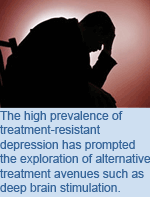 At least 30 percent of patients with depression are resistant to treatment with antidepressants. A study from TWRI’s Dr.
At least 30 percent of patients with depression are resistant to treatment with antidepressants. A study from TWRI’s Dr. 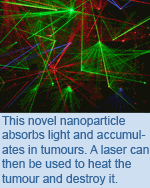 Findings from OCI’s Dr.
Findings from OCI’s Dr. 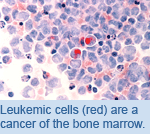 Patients suffering from acute myeloid leukemia (AML) often experience recurrence of the disease due to incomplete elimination of all leukemic cells. TGRI’s Dr.
Patients suffering from acute myeloid leukemia (AML) often experience recurrence of the disease due to incomplete elimination of all leukemic cells. TGRI’s Dr. 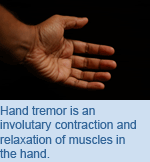 TWRI’s Drs.
TWRI’s Drs.  The causes of Inflammatory Bowel Disease (IBD)—a group of inflammatory conditions that affect the colon and small intestine, including ulcerative colitis (UC) and Crohn’s disease–remain unknown. A study from Dr.
The causes of Inflammatory Bowel Disease (IBD)—a group of inflammatory conditions that affect the colon and small intestine, including ulcerative colitis (UC) and Crohn’s disease–remain unknown. A study from Dr.  TRI’s Dr.
TRI’s Dr. 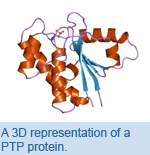 Protein-tyrosine phosphatases (PTPs) are a family of proteins that serve as critical regulators of cell growth. Oxidation—a modification that occurs when proteins interact with chemically reactive molecules containing oxygen—is known to inactivate PTP proteins, and is linked with cancer. OCI Director Dr.
Protein-tyrosine phosphatases (PTPs) are a family of proteins that serve as critical regulators of cell growth. Oxidation—a modification that occurs when proteins interact with chemically reactive molecules containing oxygen—is known to inactivate PTP proteins, and is linked with cancer. OCI Director Dr.  A study from TGRI’s Dr. Allan Detsky has examined the effect of positive and negative outcomes on company stock prices. The study identified 23 positive and 36 negative Phase III trials and analyzed the stock prices of the companies before and after a public announcement of trial results. Companies that reported positive results tended to see increases in their stock price before those results were publicly announced, suggesting a possibility of insider trading. These findings emphasize the potential legal and ethical considerations when divulging nonpublic information regarding clinical trials. [
A study from TGRI’s Dr. Allan Detsky has examined the effect of positive and negative outcomes on company stock prices. The study identified 23 positive and 36 negative Phase III trials and analyzed the stock prices of the companies before and after a public announcement of trial results. Companies that reported positive results tended to see increases in their stock price before those results were publicly announced, suggesting a possibility of insider trading. These findings emphasize the potential legal and ethical considerations when divulging nonpublic information regarding clinical trials. [ Approximately 50% of all patients with heart failure (HF) suffer from sleep apnea (SA)—abnormal interruptions in breathing during sleep—increasing the likelihood of mortality. TRI’s Dr.
Approximately 50% of all patients with heart failure (HF) suffer from sleep apnea (SA)—abnormal interruptions in breathing during sleep—increasing the likelihood of mortality. TRI’s Dr. 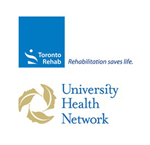 July 1st marked the official integration of UHN and the Toronto Rehabilitation Institute. The combination will provide a wide range of translational research and services. TRI is a leading academic provider of adult rehabilitation services, complex continuing and long-term care, and is revolutionizing rehabilitation knowledge and practice through innovative research and education to maximize life.
July 1st marked the official integration of UHN and the Toronto Rehabilitation Institute. The combination will provide a wide range of translational research and services. TRI is a leading academic provider of adult rehabilitation services, complex continuing and long-term care, and is revolutionizing rehabilitation knowledge and practice through innovative research and education to maximize life. This past May, Dr.
This past May, Dr.  UHN and the Princess Margaret Hospital (PMH) announced the successful renewal of the Princess Margaret Hospital Phase II Consortium (PMHC) contract through the National Institutes of Health (NIH), led by Dr.
UHN and the Princess Margaret Hospital (PMH) announced the successful renewal of the Princess Margaret Hospital Phase II Consortium (PMHC) contract through the National Institutes of Health (NIH), led by Dr.  UHN signed a follow-on licensing agreement with Vexim SA, regarding a robust software algorithm for measuring the efficacy of their SpineJack® implant procedure to repair vertebral compression fractures. SpineJack® is a vertebral body implant for the stabilization of vertebral fractures. The agreement was licensed through the Technology Development and Commercialization Office at UHN.
UHN signed a follow-on licensing agreement with Vexim SA, regarding a robust software algorithm for measuring the efficacy of their SpineJack® implant procedure to repair vertebral compression fractures. SpineJack® is a vertebral body implant for the stabilization of vertebral fractures. The agreement was licensed through the Technology Development and Commercialization Office at UHN.